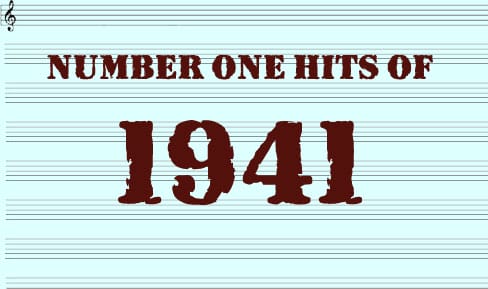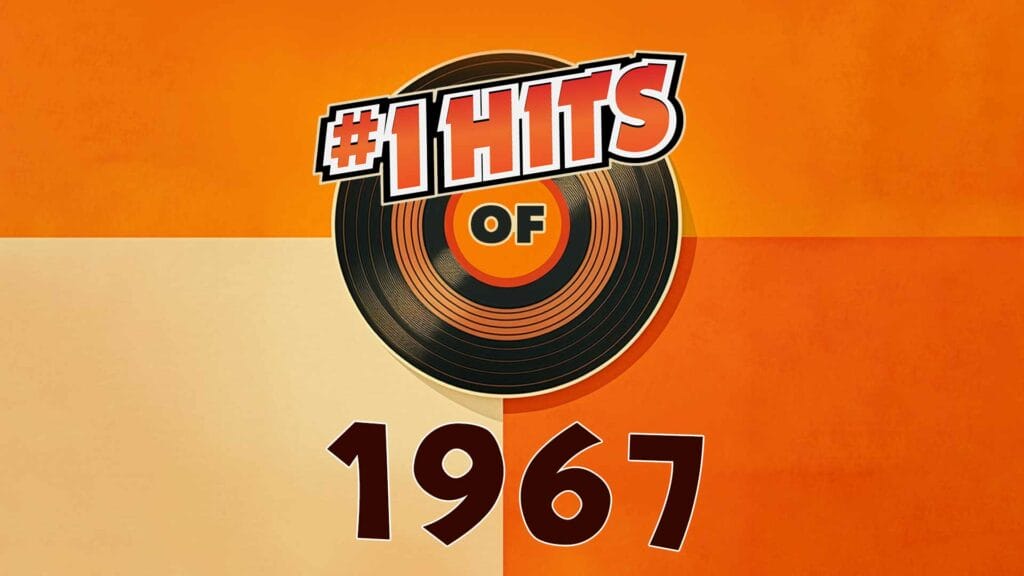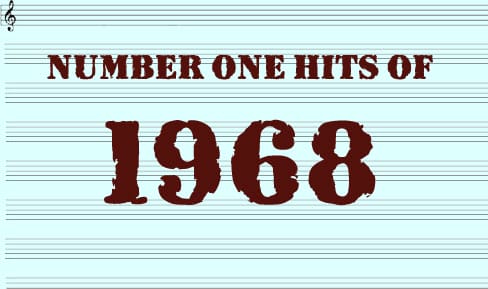 |
|||
|---|---|---|---|
The Number One Hits Of 1941 |
|||
| Dec 21, 1940 – Mar 14, 1941 Artie Shaw and His Orchestra Frenesi Artie Shaw, a clarinetist, and bandleader, was a leading figure in the swing era. “Frenesi” is an instrumental hit that showcases Shaw’s virtuosity on the clarinet. |
|||
| Mar 15, 1941 – Mar 21, 1941 Glenn Miller and His Orchestra Song of the Volga Boatmen “Song of the Volga Boatmen” is an adaptation of a traditional Russian folk song that features Glenn Miller’s signature big band sound. |
|||
| Mar 22, 1941 – Mar 28, 1941 Artie Shaw and His Orchestra Frenesi Born on May 23, 1910, in New York City, Shaw formed his first orchestra in 1936 and quickly gained fame for his exceptional talent as a clarinetist and innovative bandleader. He was known for his willingness to experiment with different musical styles and instrumentations, leading to a unique and captivating sound. |
|||
| Mar 29, 1941 – Jun 6, 1941 Jimmy Dorsey and His Orchestra with Bob Eberly and Helen O’Connell Amapola (Pretty Little Poppy) Jimmy Dorsey was a prominent saxophonist and bandleader. “Amapola” is a romantic ballad featuring vocalists Bob Eberly and Helen O’Connell. |
|||
|
Jun 7, 1941 – Jun 13, 1941 Jun 14, 1941 – Jun 20, 1941 |
|||
| Jun 21, 1941 – Jun 27, 1941 Swing and Sway with Sammy Kaye with the Kaye Choir Daddy Sammy Kaye was a bandleader known for his “sweet” dance music style. “Daddy” features the Kaye Choir, showcasing a light, catchy melody. |
|||
| Jun 28, 1941 – Jul 4, 1941 Jimmy Dorsey and His Orchestra with Bob Eberly My Sister and I Jul 5, 1941 – Jul 11, 1941 Bob Eberly, born on July 24, 1916, in Mechanicville, New York, was a popular American big band vocalist, known for his smooth, warm, and crooning style. In the late 1930s, Eberly joined the Jimmy Dorsey Orchestra as its lead male vocalist, and his collaboration with the band contributed significantly to the group’s success. |
|||
| Jul 12, 1941 – Aug 29, 1941 Swing and Sway with Sammy Kaye with the Kaye Choir Daddy Swing and Sway with Sammy Kaye was a popular big band led by bandleader and musician Sammy Kaye. Born Samuel Zarnocay Jr. on March 13, 1910, in Lakewood, Ohio, Kaye became one of the most successful bandleaders of the Swing Era. He started his music career at Ohio University, forming his first band, the Ohioans. After leaving college, he formed his own orchestra and adopted the name “Swing and Sway with Sammy Kaye.” |
|||
|
Aug 30, 1941 – Sep 26, 1941 Sep 27, 1941 – Oct 3, 1941 The collaboration between Jimmy Dorsey and His Orchestra with Bob Eberly led to several hit songs during the Swing Era, including “Amapola,” “Green Eyes,” “Maria Elena,” “Blue Champagne,” and “Tangerine.” Bob Eberly often shared the stage with female vocalist Helen O’Connell, and their duets became some of the orchestra’s most memorable hits. The partnership between Jimmy Dorsey, Bob Eberly, and the orchestra created a unique sound that blended Dorsey’s exceptional saxophone and clarinet playing with Eberly’s velvety voice, resulting in melodious and danceable music. Their collaboration helped to define the big band sound of the 1930s and 1940s, and their music continues to be cherished by fans of the Swing Era. |
|||
| Oct 4, 1941 – Nov 28, 1941 Freddy Martin and His Orchestra Piano Concerto in B Flat Freddy Martin was a saxophonist and bandleader who often incorporated classical themes in his music. “Piano Concerto in B Flat” |
|||
| Nov 29, 1941 – Dec 19, 1941 Glenn Miller and His Orchestra with Tex Beneke and the Four Modernaires Chattanooga Choo Choo “Chattanooga Choo Choo” is one of Glenn Miller’s most iconic hits. The song features Tex Beneke and the Four Modernaires, and its catchy melody and upbeat rhythm made it a favorite during the big band era. |
|||
| Dec 20, 1941 – Dec 26, 1941 Glenn Miller and His Orchestra with Ray Eberle and the Modernaires Elmer’s Tune “Elmer’s Tune” is another popular hit from Glenn Miller’s Orchestra, with vocals by Ray Eberle and the Modernaires. The song features a catchy melody and the band’s signature sound. |
|||
| Dec 27, 1941 – Jan 6, 1942 Glenn Miller and His Orchestra with Tex Beneke and the Four Modernaires Chattanooga Choo Choo Tragically, on December 15, 1944, Miller disappeared over the English Channel while traveling to Paris for a performance, and his body was never found. Despite his untimely death, Glenn Miller’s music has continued to captivate audiences worldwide, and his contributions to the big band era have left an indelible mark on the history of American music. |
|||
|
The Biggest Pop Artists of 1941 include: Charts based on Billboard music charts. |


